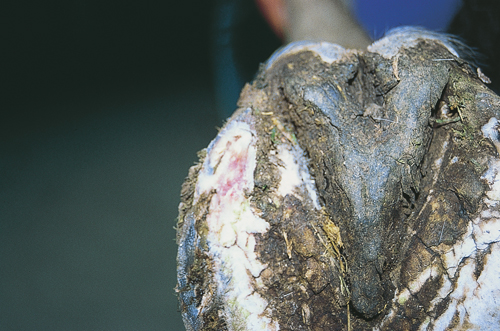Difference between revisions of "Equine Orthopaedics and Rheumatology Q&A 15"
Jump to navigation
Jump to search
| Line 31: | Line 31: | ||
#The foot can be left for a few days for the bruising to heal and the horse to become sound. | #The foot can be left for a few days for the bruising to heal and the horse to become sound. | ||
#When shoes are re-applied, care must be taken to avoid pressure in this region – shoes can have the caudal end of the medial branch seated out, and in some cases the heel widened so that it covers and protects the affected area while still being supported by the wall. | #When shoes are re-applied, care must be taken to avoid pressure in this region – shoes can have the caudal end of the medial branch seated out, and in some cases the heel widened so that it covers and protects the affected area while still being supported by the wall. | ||
| − | |l4=Corns# | + | |l4=Corns#Signalment |
</FlashCard> | </FlashCard> | ||
Revision as of 15:04, 2 August 2011
| This question was provided by Manson Publishing as part of the OVAL Project. See more Equine Orthopaedic and Rheumatological questions |
A horse presented with a grade 2/5 lameness, at the trot, in a straight line, on the left forelimb. The lameness was increased when the horse was trotted in a circle with the lame leg on the outside. Flexion tests failed to exacerbate the lameness, but hoof testers produced a positive result on the hoof’s medial aspect. The image illustrates the sole of the left fore foot after paring.
| Question | Answer | Article | |
| What condition is illustrated? | A ‘corn’ – bruising of the sole in the angle between the medial hoof wall and the bar (the ‘seat of corn’).
|
Link to Article | |
| Why is the lameness worse in the affected limb outside the circle? | The bruising is usually present on the medial side of the fore feet. |
Link to Article | |
| What causes this condition? |
|
Link to Article | |
| How would you treat this horse? |
|
[[Corns#Signalment |Link to Article]] | |
